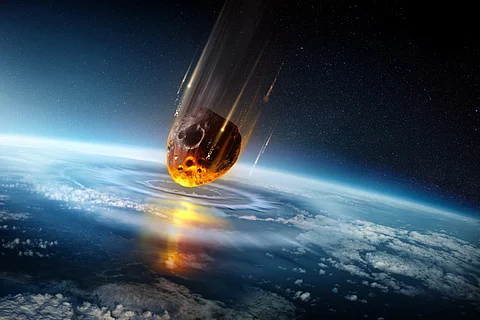

The likelihood of a 'city-killer' asteroid impacting Earth in 2032 has risen to 1 in 32, or 3.1 per cent, according to latest threat perception by National Aeronautics and Space Administration (NASA). A simulation illustrating the potential catastrophic consequences of such an impact has gone viral online.
The asteroid, designated 2024 YR4, is estimated to measure around 177 feet (54 metres) in diameter, which is about the size of a large building. While it is not large enough to wipe out humanity, it could still destroy a major city. Nonetheless, experts have stressed that there is no immediate cause for concern.
"Naturally, when you see the chances increase, it doesn’t exactly make you feel comfortable," Bruce Betts, the chief scientist at the Planetary Society, a California-based non-profit organisation, was quoted. However, Betts explained that as astronomers continue to gather more information, the probability may rise before eventually dropping to zero.
A user on X (formerly Twitter) shared a video simulation showing the asteroid’s potential impact. “NASA has raised the chance of a major asteroid hitting Earth in 2032 to 3.1 per cent, up from 2.6 per cent last week. NASA says the odds of the asteroid hitting Earth are 1 in 32. It's large enough to destroy a city,” the user wrote while sharing the video.
It is reported that the striking simulation was created by 3D animator Alvaro Gracia Montoya and it depicts a massive space rock wreaking havoc on a major city.
Asteroid 2024 YR4 was first discovered on December 27 last year by the El Sauce Observatory in Chile. The International Asteroid Warning Network (IAWN), a global collaboration for planetary defence, issued an advisory in January after the likelihood of impact surpassed one per cent. Since then, the probability has fluctuated but has shown an upward trend.
NASA’s most recent calculations estimate the impact chance at 3.1 per cent, with a possible Earth impact date of December 22, 2032. This equates to odds of 1 in 32.
However, experts maintain that there is still a 96.9 per cent chance that the asteroid will miss Earth, and as scientists refine their measurements of its path, the likelihood of a collision is expected to diminish to zero.
There is also a very slim 0.3 per cent chance that the asteroid could strike the Moon instead of Earth.